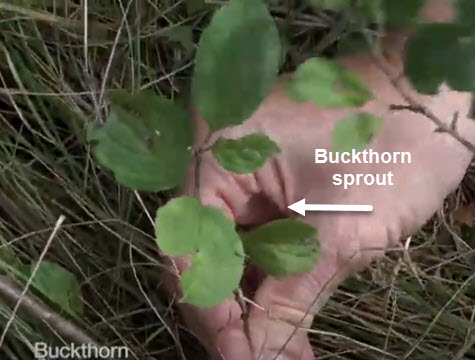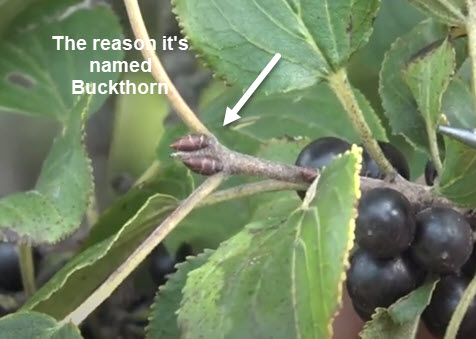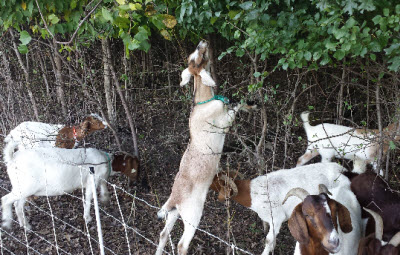Click below to listen to my 2 min. Garden Bite radio show: Busting buckthorn
Audio PlayerIt’s not too early to think about dealing with Buckthorn, one of Minnesota’s most damaging invasive plants. Wisconsin’s not real happy with it either!!

Buckthorn shrubs were originally brought here from Europe in the mid 1800’s and planted as hedges. Since then, they’ve been invading everywhere their seed has dropped. Female buckthorn should be targeted first. They bear fruit which means seeds which means birds eat and disperse them.

Buckthorn seeds in the soil can continue to germinate for many years. In fact, some say up to a decade! The shrub can also change the native soil chemistry. The root system of 2 year old and older plants must be completely removed or it will resprout for years to come. The seedlings to one year old are much easier to pull out.

The key identifiable feature of buckthorn is the “buck hoof print” that can be seen at the end of the twig. This hoof print is formed by two terminal buds and a thorn going down the middle. Buckthorn leaves are some of the first leaves to appear in the spring and the last to drop their leaves in the fall. Typical of an invasive.

If you choose to use chemicals, Herbicides containing glyphosate or triclopyr are recommended for buckthorn control. Keep in mind, they are not selective about what they kill. Many municipalities and landowners are using goats to get rid of Buckthorn. It’s a wonderful, organic way to do so. Busting buckthorn is a multi-year commitment!

The shrubs harbor crown rust fungus and soybean aphids while not having any natural controls like insects or disease that would curb their growth. Nasty things!
Controlling buckthorn [University of MN Ext.]
This video discusses the soybean aphid but also a LOT more information about buckthorn and getting rid of it.
